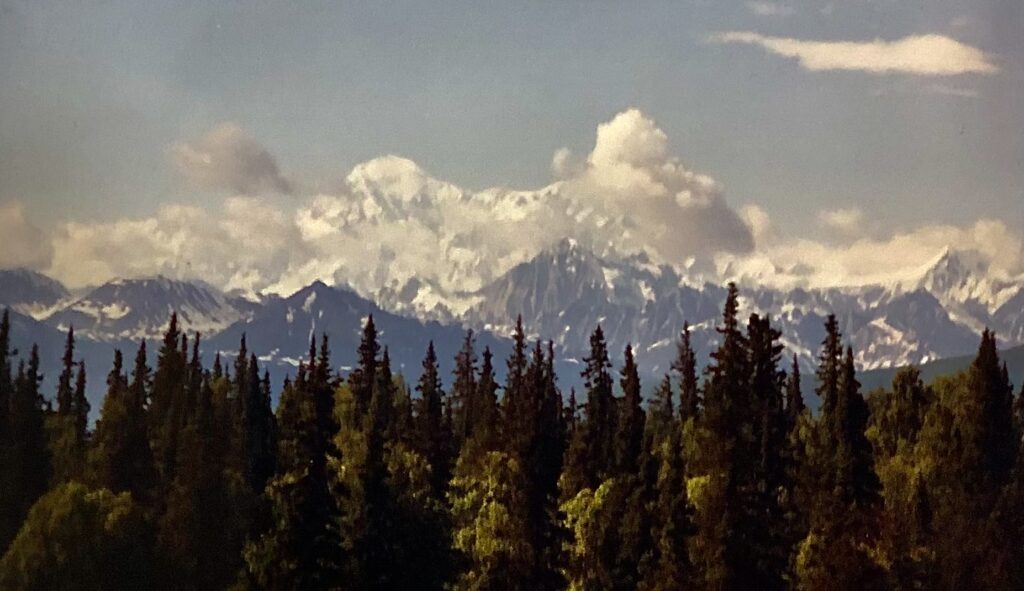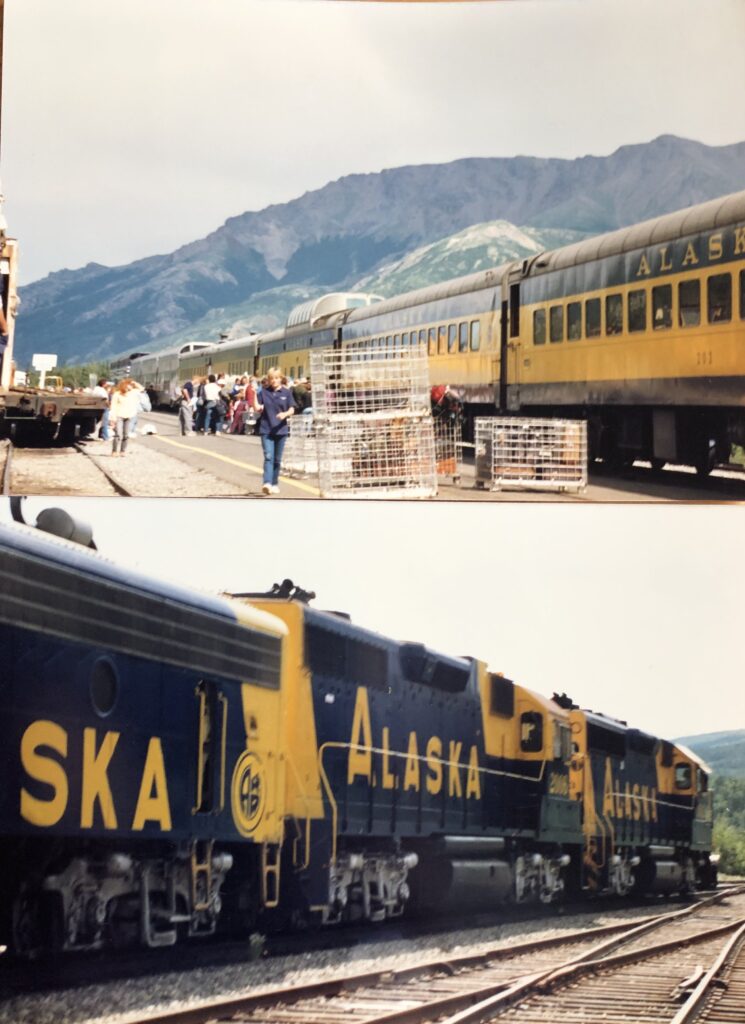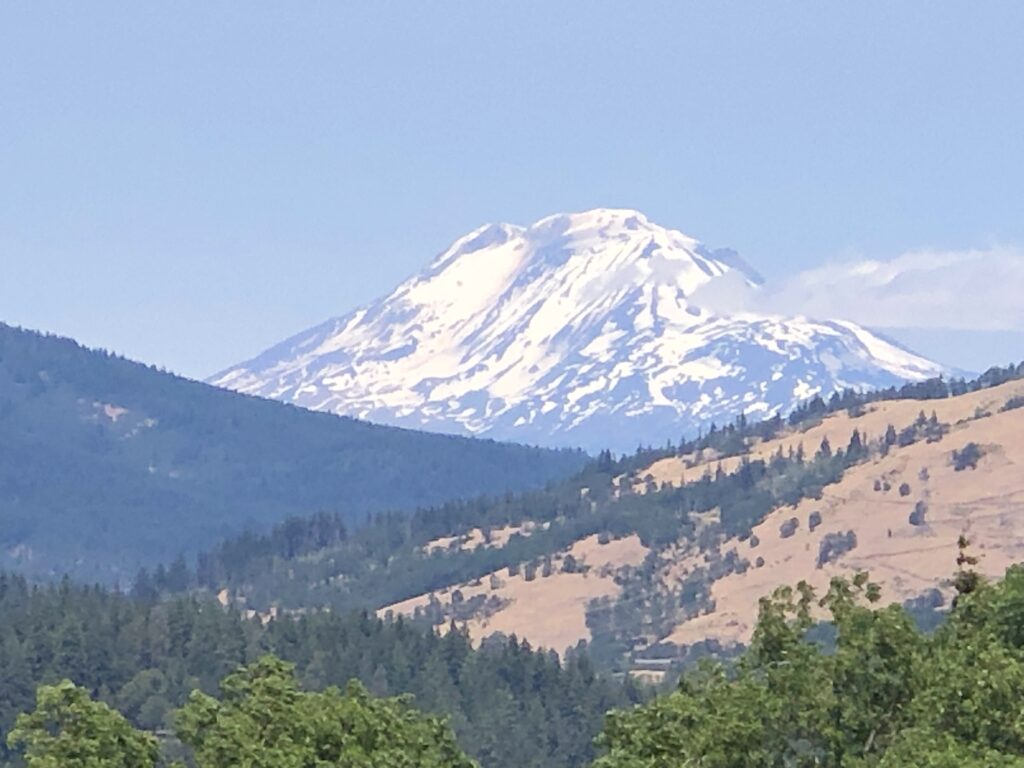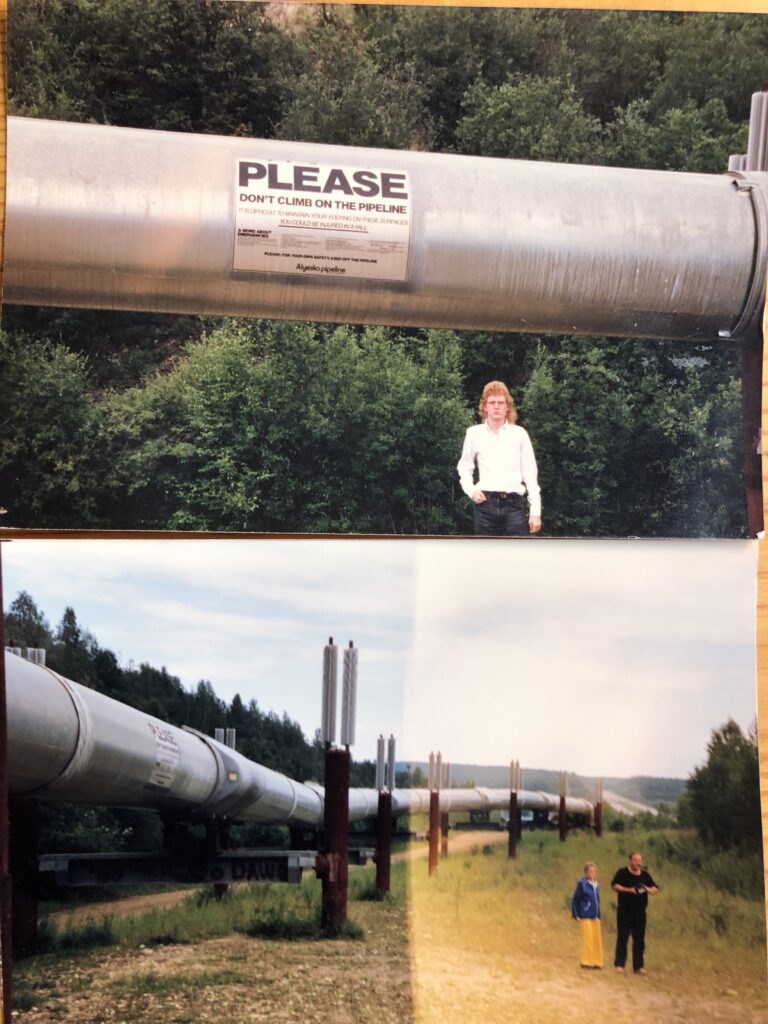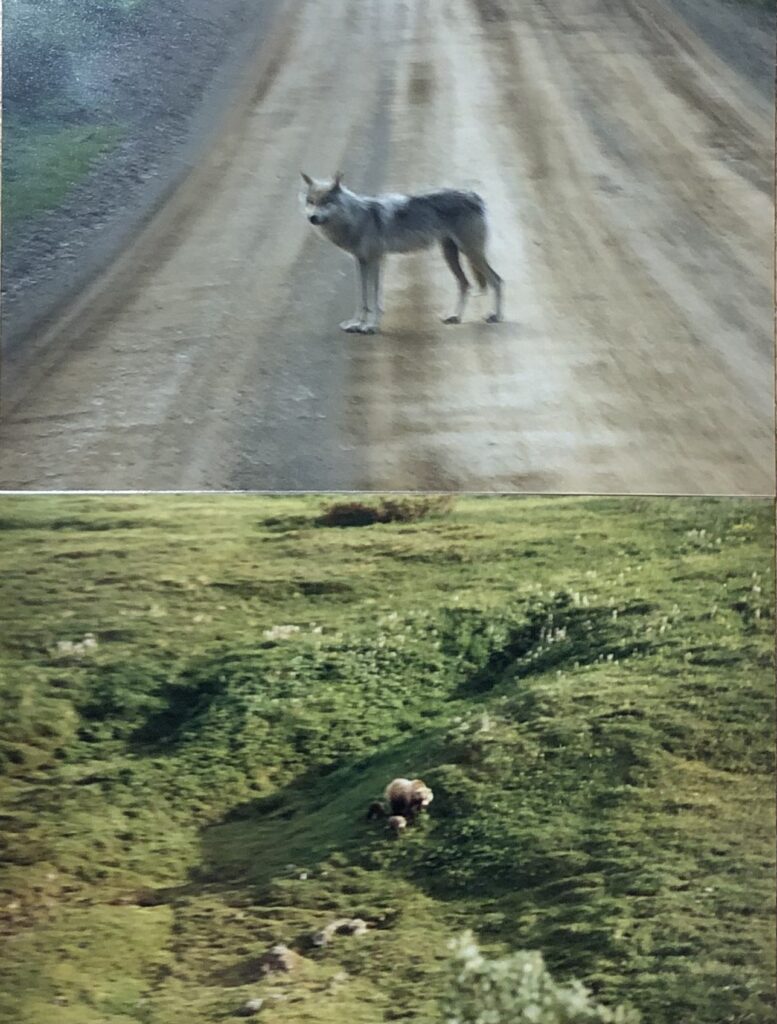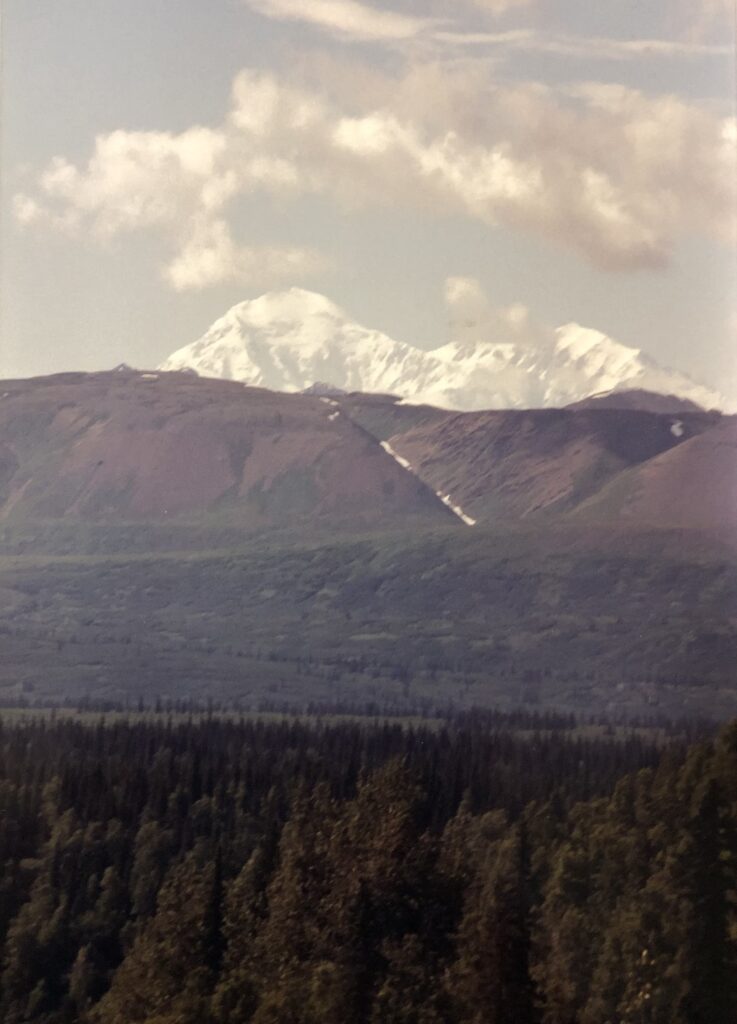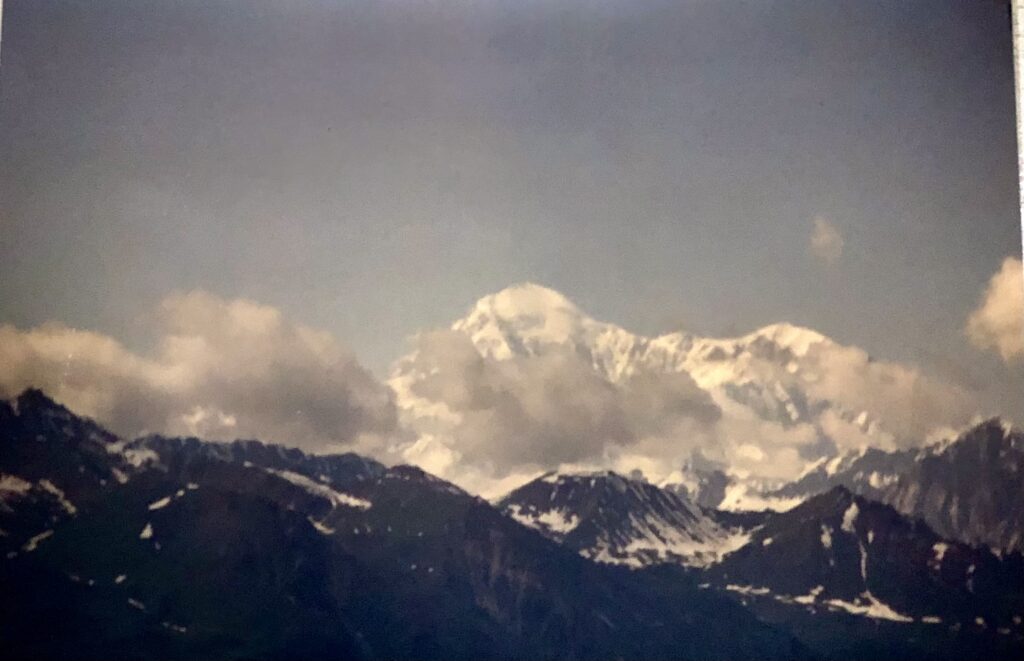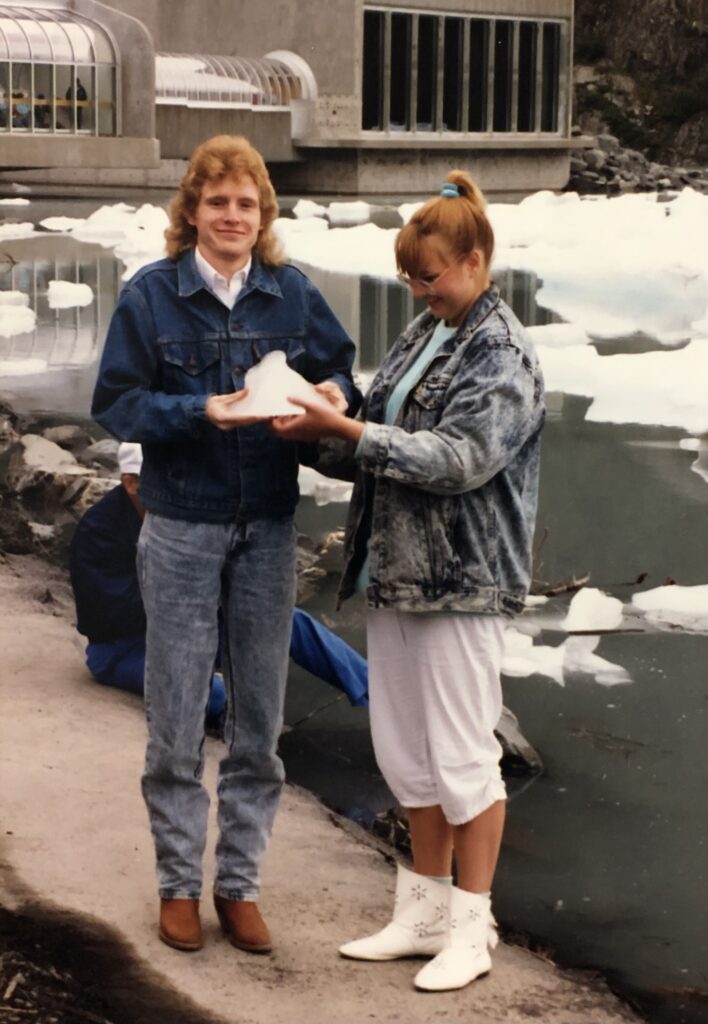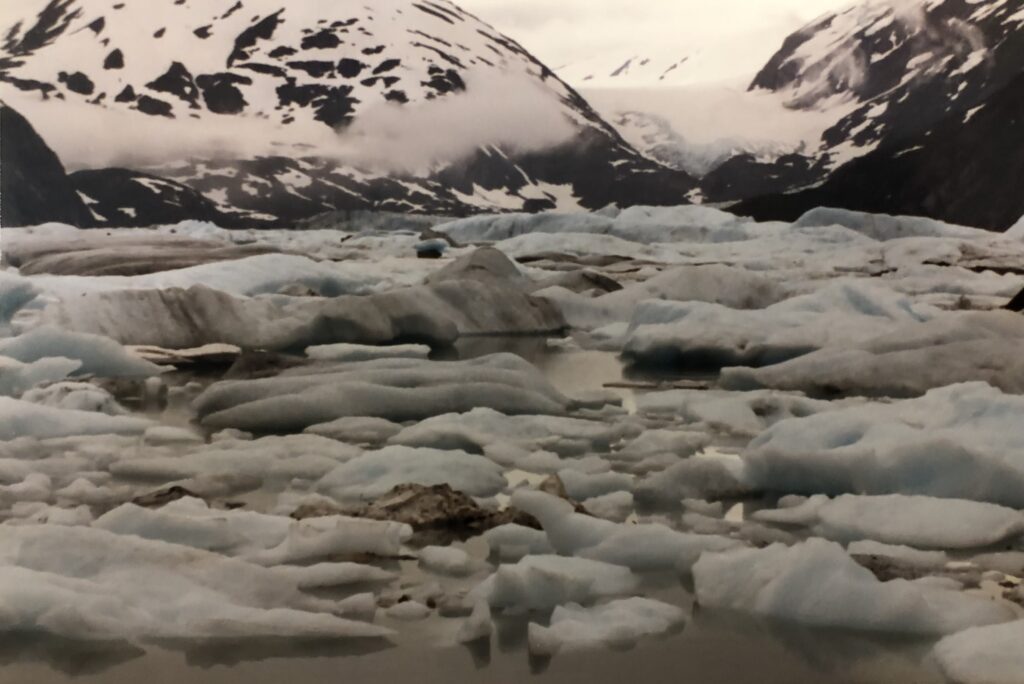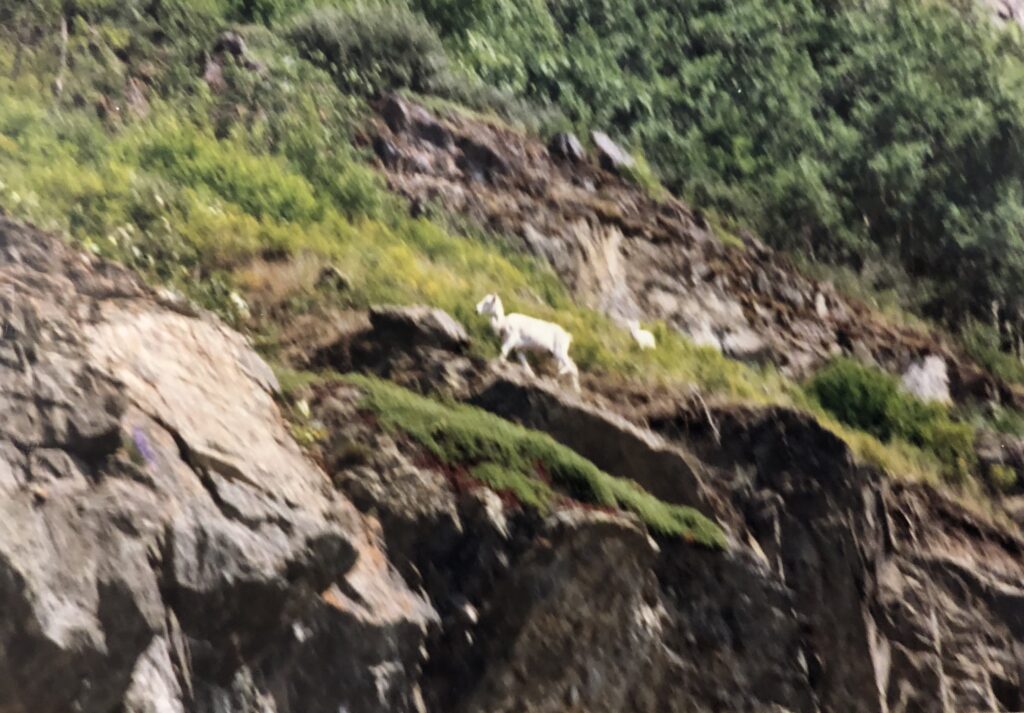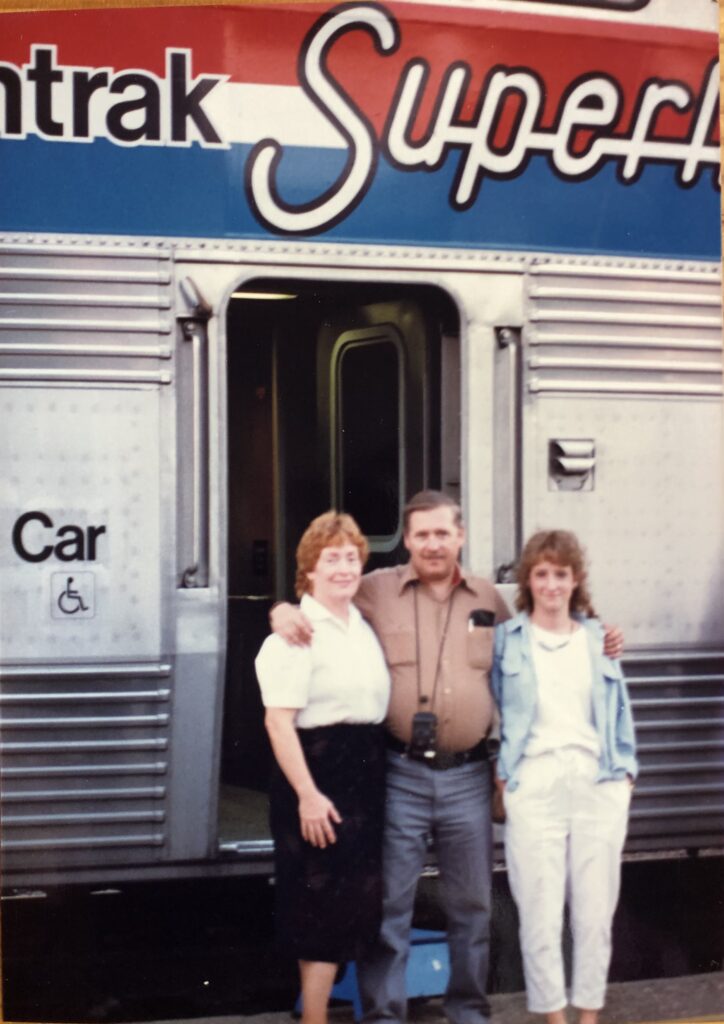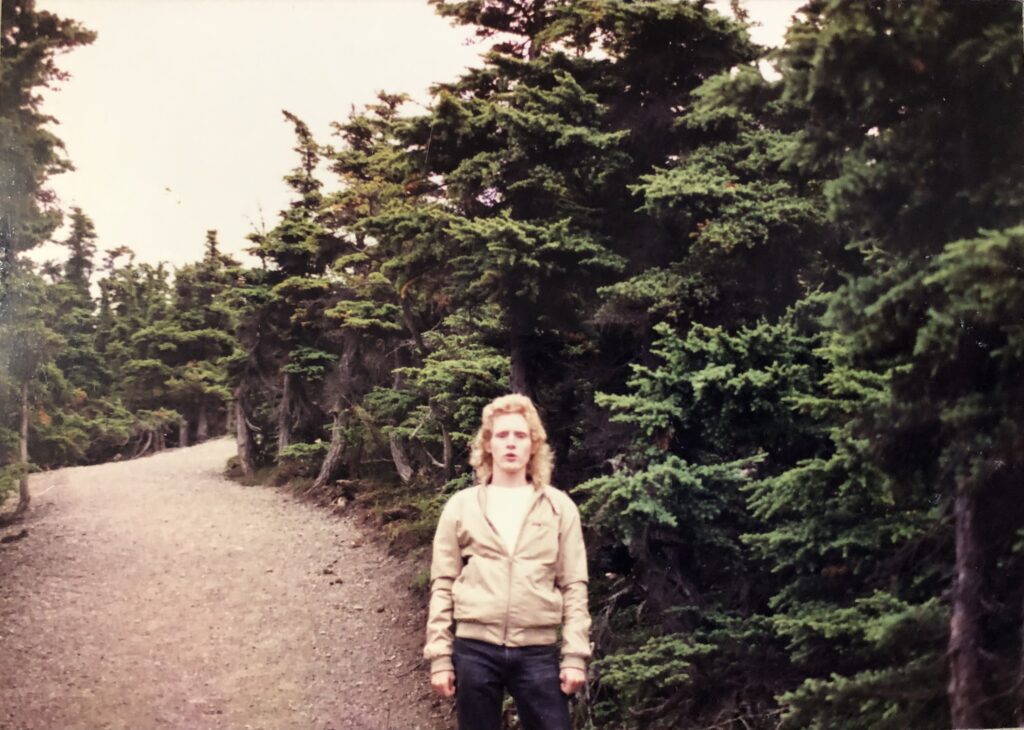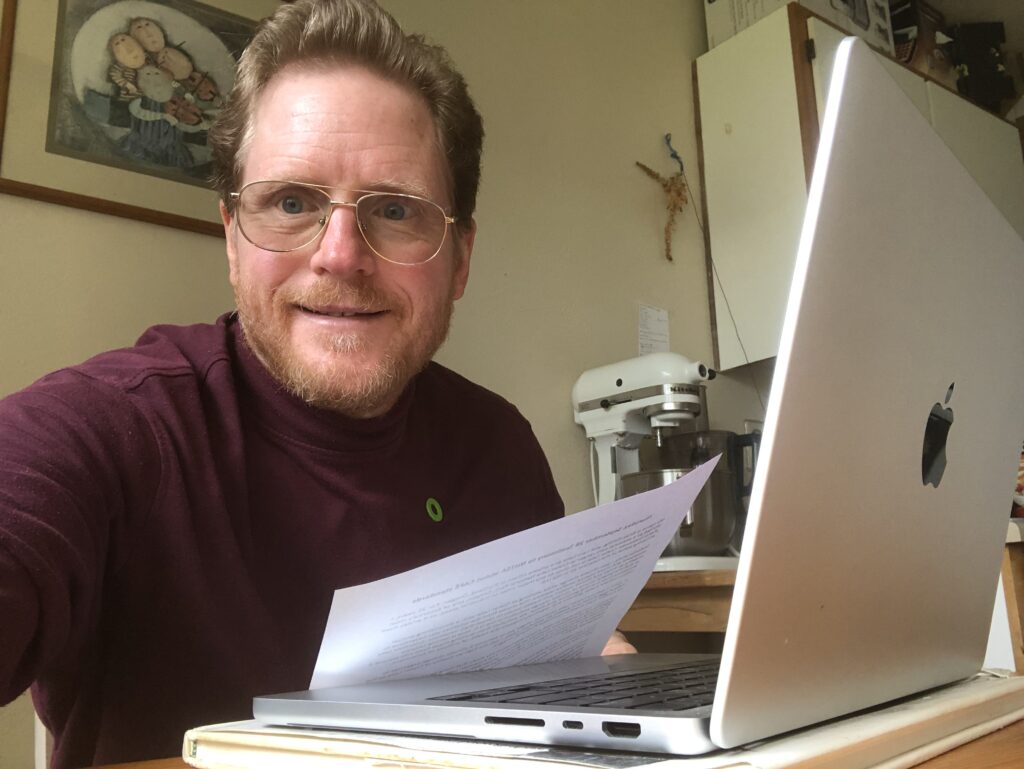
For Climate Action, giving oral testimony to legislative committees, Part 2
This is the second part of a blog I wrote on May 2, 2023, For Climate Action, giving oral testimony to legislative committees. After I posted that blog, I gave oral testimony five additional times. In September 2023, I gave oral testimony online to the National Highway Traffic Safety Administration, (NHTSA) about Corporate Average Fuel Economy (CAFE) standards. In January 2024, I gave oral testimony to the Oregon Legislative Joint Committee on Transportation. In February 2024, I gave oral testimony three times to Oregon Legislative committees.
As a climate organizer, I find it to be one of the most empowering things I can do to give oral testimonies to legislative and regulatory committees to urge them to enact strong climate policies. Thus, I want to share the text, videos, and even stories from giving these oral testimonies.
1. September 2023 Oral Testimony to NHTSA about CAFÉ standards
As a climate organizer in Portland OR, I volunteer with MCAT (Mobilizing for Climate Action Together) which is affiliated with OLCV (Oregon League of Conservation Voters). With my interest in mass transit, I joined MCAT’s Transportation Committee in January 2023.
On September 20, 2023, one of the leaders of the MCAT Transportation Committee, Rich Peppers, sent out an urgent request, ‘We’re looking for 2 or so people who’re willing to testify, remotely, in favor of national EV policy at a hearing on September 28th (next week) but with the registration deadline within two days, by this Friday, Sept. 22nd. The national League of Conservation Voters (LCV) wants testimony from around the country to demonstrate the need and urgency. If you’re willing to sign up, please let me know so I can report it back to (OLCV).’
LCV led this effort to urge OLCV to recruit a couple volunteers to testify in favor of federal clean car policy. LCV thought it was crucial that the NHTSA hear from citizens across the country, and OLCV wanted Oregon to show up strong.
The next day, I decided to volunteer to give online testimony for this hearing. I signed up to give live testimony at the NHTSA website. After I signed up, I realized I was not sure what to say. I created a rough draft of my testimony. I then approached OLCV staff to give me feedback for my draft testimony. Julia DeGraw and Britney VanCitters from OLCV graciously proofread my testimony so I felt ready to give it at the hearing on Thursday, September 28th.
While I waited much of the day to give my testimony, I kept editing down my words before I gave it on that Thursday afternoon. I did not know if I could get a recording of my oral testimony afterwards, so I took my iPhone and recorded myself as I gave it live. I then uploaded the video to YouTube so you can see it.
Here are the written remarks of my testimony:
Thursday, September 28 Testimony to NHTSA about CAFE standards
My name is Brian Ettling, and I am here as a private citizen in Portland, Oregon. For 25 years, I worked as a seasonal park ranger at Crater Lake National Park, Oregon, one of America’s most scenic treasures. Crater Lake is not close to any major cities or industrial areas, so it prides itself as having some of the cleanest air in the U.S.
Unfortunately, I saw climate change while working at Crater Lake with a diminishing annual snowpack and more intense wildfire seasons. The smoke from the wildfires was hazardous to breathe at times and forced visitors with health issues to cancel their vacations. Scientists tells us that the largest source of climate change pollution in the U.S. now is vehicle tailpipe emissions from burning gasoline and diesel. Air pollution from burning these fuels kills around 9 million people a year globally and negatively impacts the health of millions of Americans.
In 2017, I quit my Crater Lake seasonal ranger job to become a climate change organizer to reduce that threat and deadly air pollution. Sadly, I left the high air quality of Crater Lake to live by a major busy street in northeast Portland, Oregon.
Recently, I was alarmed to read a New York University study that living by a busy urban road can raise the risk of premature death by 20 percent. The American Lung Association reports that adults living closer to a busy road or highway—within 300 meters—may risk dementia. The Environmental Protection Agency’s website states that “research has demonstrated that exposure to pollutants emitted from motor vehicles can cause lung and heart problems and premature death.”
Thus, I am scared about the long-term health impacts of living next to a busy road. My wife and I frequently open our windows in spring, summer and fall to cool down our apartment, which lets in the dirty emissions from nearby vehicle traffic.
With my fears of inhaling toxic vehicle pollution, I urge NHTSA to finalize the strongest possible CAFE standards. Vehicle manufacturers have the technology to meet strong standards. Many recent analyses have shown that strong fuel economy standards will save consumers money at the pump, provide access to the most efficient versions of gas-powered vehicles, and encourage transition to more zero-emission vehicles. This is a win-win-win for healthier air and a safer climate, better health outcomes, and more money saved by consumers.
Thank you for this opportunity to testify.
I felt edgy waiting hours to give this testimony. Many people signed up nationwide to provide oral testimony. Some did not show up, which pushed up my time to testify. On the other hand, it was fun to testify in the comfort of my own home. Overall, I felt pleased to give this testimony to increase the CAFE standards to decrease harmful greenhouse gas pollution
2. January 2024 Testimony to the Joint Oregon Legislative Transportation Committee
On January 6, 2024, the Oregon Legislative Joint Committee on Transportation scheduled a public hearing in Gladstone OR, a community in the southern part of the Portland metro area. The hearing was to get public input on possible tolling, congestion pricing, and possible funding for the replacement I-5 bridge that connects Portland to Vancouver WA. The MCAT Transportation Committee supports tolling and congestion pricing to reduce vehicle emissions on Oregon’s highways, especially in the Portland area.
I decided to start 2024 on a good note by giving oral testimony at this hearing. My friend from MCAT, Catherine Thomasson planned to attend this hearing. She agreed to give me a ride so I would not have to drive my own car there. When we arrived, nearly everyone from the Gladstone area came to strongly object to any thought of the state of Oregon administering tolling or congestion pricing.
I was one of the very few people who came to testify in favor of tolling and reducing emissions from vehicle traffic. I had to wait several hours to testify at this hearing. It was well worth the wait. The audience grumbled during my oral testimony. Someone even yelled from the audience as I was giving my testimony, “Did your ride your horse here today?”
I like going against the grain if I think that society is heading in the wrong direction. I love speaking out for what I think is best, especially for climate action. Thus, it was an honor to give oral testimony that day.
Unfortunately, I was not able to get a photo of myself testifying. The Oregon Legislative committees are normally excellent capturing video recordings of their hearings. However, for whatever malfunction, the recording did not have a video during the last couple of hours of the hearing. Just the audio was recorded. Thus, you can hear what I have to say at 1:45:44 of the recording. However, you cannot see me. That was a disappointment that of no video my hearing.
Oral Testimony to Joint Committee on Transportation on January 6, 2024
My name is Brian Ettling, and I live in outer northeast Portland. For 25 years, I worked as a seasonal park ranger at Crater Lake National Park, Oregon, one of America’s most scenic treasures. Crater Lake is not close to any major cities or industrial areas, so it prides itself as having some of the cleanest air in the U.S.
Sadly, I saw climate change at Crater Lake with a diminishing annual snowpack and more intense wildfire seasons. The smoke from the wildfires was hazardous to breathe at times and forced visitors with health issues to cancel their vacations. Scientists tell us that the largest source of climate change pollution in the U.S. and Oregon now is transportation caused by vehicle tailpipe emissions from burning gasoline and diesel. Air pollution from burning these fuels kills around 9 million people a year globally and negatively impacts the health of millions of Americans and tens of thousands of Oregonians.
In 2017, I quit my Crater Lake ranger job to become a climate change organizer to reduce that threat and deadly air pollution, the leading cause is transportation. Thus, today I urge you to design our transportation system to optimize safety, climate, maintenance, as well as reducing congestion. We should use a variety of funding sources to replace the gas tax as that decreases due to greater fuel efficiency and electrification.
Let’s shift from fuel tax to multiple other mechanisms, such as
Congestion pricing
VMT or Vehicle Miles Traveled tax graded for vehicle efficiency
Road user fees, such as local tolling projects.
EV purchase or registration fees
Vehicle weight tax
Cordon charges
Parking charges
Tire fees.
If we don’t expand highways, we have enough funds to build a better transportation system. As a state, we also need to be investing more in light rail, bus, and passenger rail transportation to assist Oregonians who can’t drive, don’t like to drive – like me, and shouldn’t be driving – like me (FYI: I drive slow so don’t drive behind me after we leave this hearing today. I tend to cause my own traffic congestion. I drive a green Honda Civic). Anyway, we need to invest, not just in roads, but in other multimodal options to reduce vehicle congestion and deadly pollution.
I love taking Tri-Met (MAX and buses) in Portland instead of driving and taking Amtrak to cities outside of Portland. If you saw my driving, you would agree we should be investing more in that and not roads. Thank you for your time!
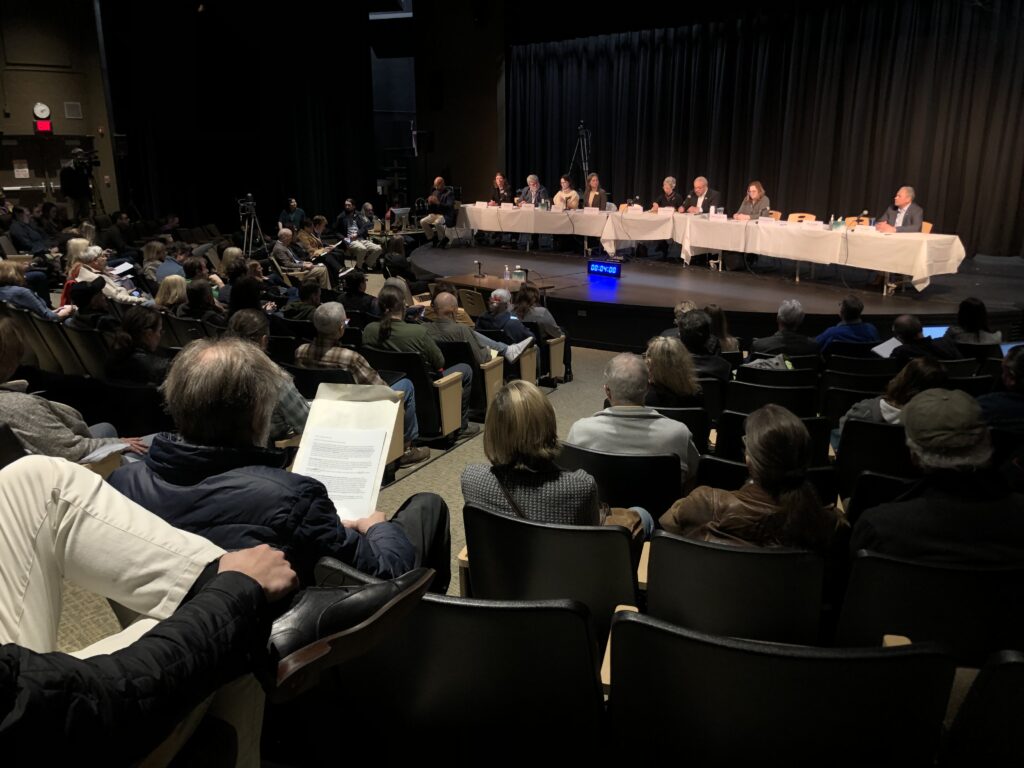
3. February 8, 2024 Testimony to the Oregon House Committee about the COAL ACT
As a member of MCAT, I became aware of Divest Oregon in early 2022. They are “a statewide grassroots coalition of individuals and organizations representing unions with PERS (Oregon Public Employees Retirement System) members, racial and climate justice groups, youth leaders, and faith communities with the goal of calling the Oregon State Treasury to account for its funding of climate devastation rather than prudent investing in a sustainable future.”
MCAT is part of the Divest Oregon Coalition, along with the Climate Reality Portland Chapter where I am an active volunteer.
For last several years, Divest Oregon pushed hard for bills to divest Oregon’s Treasury from fossil fuel investments. During the Oregon Legislative of 2022, Divest Oregon advocated for Treasury Transparency bill (HB 4115-3). The bill mandated that the Treasury disclose all of the assets they manage. Prior to the drafting of this bill, the Oregon Treasury did not list public equity nor fixed assets investments on their website, especially if their investments involved corporations extracting, distributing, or selling of fossil fuels.
The Transparency bill passed the Oregon State House and then ran out of time to be considered by the Senate during the short 2022 Feb-March session. Even though the bill died in the Oregon Senate, Divest Oregon still felt like they scored a victory. After they filed a public records request and got a bill submitted to the legislature, the Treasury posted the investments in the two missing asset classes.
For the 2023 Oregon Legislative session, Divest Oregon lobbied for the passage of Treasury Investment and Climate Protection Act (HB 2601). After this bill was introduced in the Oregon House in January 2023, the House Speaker referred it to the House Committee Emergency Management, General Government, and Veterans. The bill had a couple of public hearings. But the bill died in the committee.
According to Divest Oregon, HB 2601 died because the Oregon State Treasury publicly opposed the transparency legislation and successfully lobbied behind the scenes to stop the bill. However, it was not just the OR Treasury, led by Treasurer Tobias Read, that objected to the bill. One of the big three public employee unions, the American Federation of State, County and Municipal Employees, sided with the OR Treasury and State Treasurer Read in opposing the bill.
After the defeat of the 2023 bill, Divest Oregon changed tactics to work with Treasurer Read on a bill that he could support. In the latter half of 2023 when the Oregon Legislature was not in session, Divest Oregon proposed the COAL Act (Clean Oregon Assets Legislation) for the 2024 OR Legislative session to divest the Treasury from any coal investments.
Divest Oregon organized a lobby day at the Oregon state Capitol in Salem on January 10, 2024 that I participated. The legislature was not in session, but the legislators had a workday at the Capitol with committee and lobby meetings.
This was a very productive lobby day at the Capitol for me. I was part of a lobby meeting with Representative Hoa Nguyen who agreed to sign on as a co-sponsor of the COAL Act. I then participated in a lobby meeting with my Senator Kayse Jama and his Chief of Staff Kien Truong. I thanked Senator Jama for being a Chief Sponsor of the COAL Act. I then led a lobby meeting with Abigail Kirshy, the Chief of Staff for my Representative Andrea Valderrama, to urge her to support and co-sponsor the COAL Act.
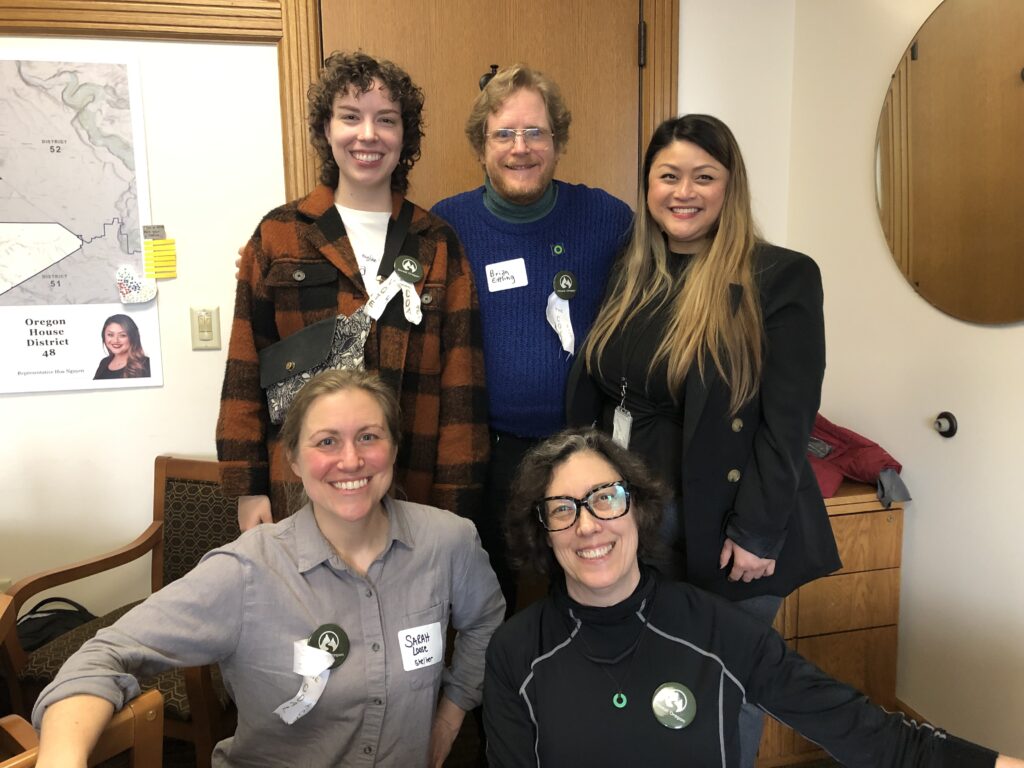
After our morning lobby meetings, Divest Oregon had all the lobby participants reassemble in a meeting room of a nearby church for lunch. The champion of the bill, Representative Khanh Pham spoke to us to thank us for our lobbying efforts that day and we got a group photo with her. This lobby day showed that the COAL Act seemed to have strong momentum and support in the legislature to pass during the month-long short session.
On February 8th, I returned to the Oregon Capitol to lobby with MCAT for their first of three Thursday lobby days. We had meetings with legislators and their staffs to urge them to prioritize climate policy and funding bills during this short legislative session. That afternoon, the House Committee on Emergency Management, General Government, and Veterans scheduled a hearing for the COAL Act (HB 4083). Since I was already present in Salem for the MCAT lobby day, I choose to attend this hearing and to testify in favor of this bill.
I was part of a carpool for this MCAT lobby day. I successfully talked everyone in this carpool to attend this afternoon hearing at 1 pm. They were enthusiastic about watching this hearing and supportive of me giving testimony. Fortunately, the MCAT lobby day was scheduled to wrap up before 1 pm, so this hearing was not in conflict with any scheduled lobby meetings.
When I arrived at the hearing for this committee, Oregon Treasurer Read and Representative Khanh Pham were the first two public officials to testify in support of this bill. Unlike the 2023 Treasury Investment and Climate Protection Act that Treasurer Read opposed, it was a positive sign that he fully supported the COAL Act. This was a great signal to legislators on this House Committee that Treasurer Read and Oregon Treasury was fully onboard this bill.
After Treasurer Read and Representative Pham gave their testimony, the committee opened up the testimony for the general public. I signed up online to testify the day before. I was surprised when the Committee Chair, Representative Dacia Grayber, called my name to testify.
I then walked up to sit at the table and speak into the microphone to give my oral testimony to the committee. The committee limited our testimony to less than two minutes. I was relieved my testimony was at one minute and 40 seconds, well below the two-minute limit.
Our carpool group soon left for the drive back to Portland soon after my testimony to try to beat the rush hour traffic. They were all complimentary of my testimony and seemed impressed with the personal story I shared.
Here is the video of my testimony and below that is the written remarks of my oral testimony.
COAL Act Testimony to the Oregon House Committee on February 8, 2024
Representative Grayber and members of the Committee:
My name is Brian Ettling and I live in NE Portland.
I am here today because of my dad, LeRoy Ettling, pictured here with my Mom.
For the past 11 years dad has struggled stage 4 bladder cancer. Because of the cancer, he lost his ability to walk and now lives in an assisted care facility.
In 2013, my Dad had a huge tumor and kidney removed. The doctors thought my Dad was a smoker since his cancer is consistent with a life-long smoker. My dad was always a non-smoker.
However, we lived for about 33 years a couple of miles from a coal fired power plant in St. Louis, Missouri that had no modern pollution controls, increasing the risk of his cancer.
Scientific research has known for decades that burning coal is a known human carcinogen that impacts the health of workers and the surrounding communities.
Burning coal is bad for our health and it is also a waste of our taxpayer dollars.
I read that the Oregon Public Employees Retirement System (PERS) and the Oregon Treasury Short Term Fund have between $700M and $1B invested in coal over the past 3 years in publicly traded funds.
To be blunt, Coal is an investment loser. According to Divest Oregon, PERS coal investments underperformed by $340 million dollars, compared to if the state had alternatively been invested in the S&P fossil fuel free index fund instead.
I ask you to pass the COAL Act bill for my Dad, all of our families and our kids.
Thank you!
4. February 13, 2024 Testimony to Joint Transportation Committee about WES Study Bill
A few days later, I learned the Joint Transportation Committee scheduled a hearing on the WES Study Bill (SB 1572). I strongly supported this bill for the OR Legislature to require the Department of Transportation, in partnership with the Westside Express Advisory Committee, to study extending the Westside Express Service (WES) commuter line from Wilsonville to Salem.
The WES Commuter Train currently runs from Beaverton, a western Portland metro community, to Wilsonville, a community just south of the Portland metro area. I lobbied in Salem many times. In addition, I drove from Portland to Salem on other occasions to give climate presentations in Oregon or pass through Salem with my wife to sightsee and visit friends in other parts of the state. Driving from Portland to Salem or the other direction during the intense rush hour traffic I found to be very frustrating. My wife works near our apartment in outer northeast Portland. Yet, she has co-workers who commute from Salem each day.
For years, I believed that Oregon must have more commuter train service from Portland to Salem to reduce the heavy traffic on this route. Thus, I fully supported of this WES study bill to investigate the feasibility of extending the WES commuter train to Salem. I followed this bill closely from when I first heard about it in the last week of January 2024. After receiving an MCAT Transportation Committee action alert about this bill, I called and emailed the Chairs and Vice Chairs of this committee to ask them to schedule a hearing on this bill in one of their first committee meetings during the February legislative session.
In the first week of February, I then received a notice from Oregon Legislative Informative System that the Joint Transportation Committee scheduled a hearing on the WES Study Bill on Tuesday, February 13th. I was not planning on traveling to Salem to attend this hearing in person. I had no interest in fighting the traffic, the wear and tear on my vehicle, the cost of gas to drive there, and time expense of several hours to go in person to be at this hearing in person. I was excited I could sign up for to give online oral testimony in the comfort of my own home.
Here is the video my online oral testimony for the WES study bill. Below that is the written testimony I read for my oral testimony.
February 13, 2024 Testimony for WES Study Bill to Joint Transportation Committee
Members of the Committee.
My name is Brian Ettling. I live in northeast Portland.
I am here to represent MCAT (Mobilizing for Climate Action Together) Transportation Committee. We stand with 1000 Friends of Oregon, Climate Solutions, No More Freeways, and the Environmental Center to strongly support SB 1572, which establishes a task force to study the feasibility of extending the Westside Express Service (WES) commuter rail to Salem, incorporating additional local stops. This initiative is crucial to creating a more connected, efficient, and sustainable transportation system in Oregon.
We urge you to pass SB 1572 because investing in an expanding commuter rail services and infrastructure:
• Advances Oregon’s Vision for a Truly Multimodal Transportation System.
• Creates options other than driving that will help ease the frustrating congestion that many of you face regularly on your commute to and from Salem.
• Can significantly reduce traffic-related accidents, injuries, and fatalities on our roads by encouraging less driving, which is linked with higher levels of safety for all transportation users.
• Offers an effective alternative to car usage, potentially lowering harmful vehicle pollution and improving Oregonians’ air quality, thereby contributing to a healthier planet. Expanding rail access is critical to meeting our climate goals.
• Is a cost-effective approach to transportation. It presents long-term savings on road maintenance, eases the need for road expansions.
• Provides greater access to jobs, education, and healthcare, especially for individuals without a car. One in four of Oregonians can’t drive due to age, disability, or cost.
The proposed expansion of WES will stimulate economic growth, encourage transit-oriented development.
Again, please pass SB 1572.
Thank you for your time.
5. February 22, 2024 Testimony to the Oregon Senate Committee about the COAL Act
One week later, on Thursday, February 22nd, MCAT held another lobby day at the Capitol to meet with legislators and staff to urge them to pass climate policy and funding bills during the last two weeks of this legislative session.
By this point, the COAL Act had successfully passed out of the House Committee on Emergency Management, General Government, and Veterans. On Monday, February 19th, the Oregon House voted to pass the COAL Act on a party line vote of 33 to 24. This bill then moved to the Oregon Senate where it was assigned to the Senate Committee on Energy and Environment. This Senate Committee scheduled a hearing for the COAL Act on February 22nd at 1 pm.
Ironically, I planned to be at the Capitol for this MCAT Lobby Day on February 22nd. Like the February 8th lobby day, MCAT planned to have all the lobby meetings finished before 1 pm. Therefore, I decided to sign up to give oral testimony for the COAL for this Senate Committee. Like the lobby day on February 8th, I succeeded in persuading the carpool group that I commuted with to Salem to stay longer so I could give oral testimony.
Before I entered the Committee room to testify, Doyle Canning enthusiastically said hello me. She was the Legislative Director for Rep. Khanh Pham, the Chief Sponsor for the COAL Act. Doyle remarked she liked the testimony I gave about the COAL two weeks ago. She wondered if I signed up to give testimony at the committee hearing starting in a few minutes. I assured her that I planned to testify. She said my previous testimony would be great if I gave it again. I appreciated her compliment, and then I informed her that I prepared new testimony for this hearing. She was delighted I was testifying, and she looked forward to my testimony. She commented, ‘Whatever you say in your testimony, if it is like the previous time, I know it will be good.’
I appreciated her kind words because I love giving oral testimony on climate bills, but I still get nervous hoping I prepared well. It did not take long for my name to be called to testify. Not as many members of the general public looked to give testimony as when the hearing was held in the Oregon House Committee two weeks prior.
Like my oral testimony in the Oregon House for the COAL Act previously, I thought it went well. I was thrilled I spoke around one minute and 40 seconds. This was well below the two-minute limit the Committee Chair set for oral testimony. It was about the same amount of time as my COAL Act oral testimony to the House Committee two weeks before.
Here is a video of my oral testimony with my written remarks below the video:
February 22, 2024 COAL Act Testimony to OR Senate Energy and Environment Committee
Senator Sollman and members of the Committee:
My name is Brian Ettling and I live in NE Portland.
I was a seasonal park ranger for 25 years from 1992 to 2017 at Crater Lake National Park, Oregon.
I loved my park ranger job but, sadly, I saw climate change while working there, I observed a diminishing annual snowpack and a more intense fire season with more smoke in the summertime. I became so worried about climate change that I spent my winters in my hometown of St. Louis, Missouri organizing for climate action as far back as 2010.
On December 11, 2012, I noticed this headline in the St. Louis Post-Dispatch, “Poor, Black and Breathless: Asthma Strikes Many Here.” The front-page article stated 1 in 5 children, primarily children of color, struggle with chronic lung diseases, such as asthma, in the St. Louis area. That was twice the national average of U.S. children with asthma.
How do children get asthma? Primarily from dirty air pollution. Around that same time, I learned that St. Louis burned twice as much coal, over 80%, than the national average.
Scientists estimate the air pollution from burning coal, oil, and natural gas kills around 9 million people globally a year, including in Oregon. Burning coal also disproportionally impacts the health of seniors, children and communities of color, such as Xavier Miles, who was 8 years old when this photo was taken.
Burning coal is an investment loser for Oregon’s Treasury, it’s like investing in arsenic.
I ask you to pass the COAL Act bill to divest in coal investments for our families and our kids.
Thank you!
On March 7, 2024, The Oregon Legislative session ended with mixed results for me in my efforts giving oral testimony to legislative committees. The bad news is that the WES study bill died in the Joint Ways and Means Committee after successfully pass out of the Joint Committee on Transportation. I am still not sure why this bill did not pass.
In the local legislative town halls that happened since the end of the 2024 Legislative session, I attended these town halls to ask the Portland area legislators why the WES study bill did not pass and urged them to reconsider the WES study bill in the 2025 Legislative session. The legislators looked genuinely stumped when I questioned them why the WES study bill did not pass. Some of them did not seem to know about the bill. Other legislators thought it would probably be re-introduced as part of the massive 2025 transportation package for Oregon. Either way, I plan on being a squeaky wheel and steady advocate to make sure that the WES study bill will be seriously considered by the Oregon Legislature in 2025.
The good news is that the COAL Act passed the Oregon Legislature and was signed into law by Governor Tina Kotek on April 4, 2024. As a climate organizer, it was a thrill for me to be part of an effective campaign to reduce investments and dependence on the dirtiest of fossil fuels, coals, that contributes ton climate change.
Final Thoughts
Along with lobbying U.S. Congressional and Canadian Parliamentary Offices, talking directly with my members of Congress and Oregon legislators, planning three large climate events, giving climate change talks in 12 U.S. states, completing climate change speaking tours across Oregon and Missouri, writing climate change opinion editorials published in newspapers, and participating in climate change radio and podcast interviews, I feel like giving oral testimony to Oregon Legislative committees to support climate bills is one of the most empowering climate actions I have done. It is intimidating to give oral testimony to legislators. I spend a lot of time writing my testimony in advance. I then frequently practice it with a timer so I can speak it under the allotted two minutes. This means I keep editing my testimony down to keep it under two minutes.
I am always relieved when my testimony is over. To be honest, it is nerve racking to give oral testimony. When preparing, I strive to share a compelling story, with solid supporting facts, and a sticky message to persuade legislators to support specific climate bills. This might be a stressful experience for some climate advocates that they may choose to forgo. However, I am grateful for the times I gave oral testimony over the last six years. I think it is satisfying.
Stay tuned! I will give more oral testimony to legislators during the 2025 legislative session. Thus, at some point, I will write a part 3 blog to giving oral testimony to legislative committees.

